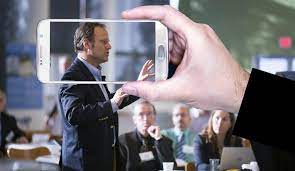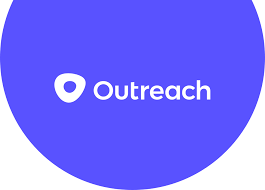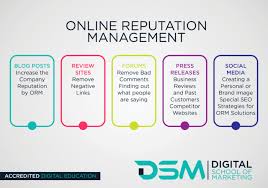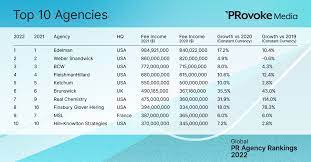Event Publicity and Promotion: Creating Buzz for Unforgettable Experiences
Planning and organizing an event takes tremendous effort, but without effective publicity and promotion, all that hard work might go unnoticed. Whether it’s a conference, concert, product launch, or charity fundraiser, getting the word out is essential to ensure a successful turnout. In this article, we will explore the importance of event publicity and promotion and provide valuable tips on how to create buzz for your upcoming event.
First impressions matter, and when it comes to events, publicity is the key to capturing attention. It’s crucial to start promoting your event well in advance to generate excitement and anticipation among your target audience. Utilize various channels such as social media platforms, email marketing campaigns, press releases, and traditional advertising methods to reach potential attendees.
Social media has become a powerful tool in event promotion. Create engaging content that showcases the unique aspects of your event. Use eye-catching visuals, compelling captions, and relevant hashtags to increase visibility across different platforms. Encourage attendees and influencers to share your posts to expand your reach even further.
Another effective way to promote your event is through partnerships and collaborations. Identify businesses or organizations that align with your event’s theme or target audience and explore opportunities for cross-promotion. This can include guest blogging on their platforms or co-hosting promotional events.
Harnessing the power of influencers can also significantly boost event publicity. Collaborate with industry experts or well-known personalities who have a strong following in your niche. They can help spread the word about your event through their social media channels or by participating as speakers or performers.
Don’t underestimate the impact of traditional marketing methods either. Press releases sent to local newspapers or industry publications can generate valuable media coverage for your event. Additionally, consider distributing flyers or posters in strategic locations frequented by your target audience.
Creating anticipation leading up to the event is crucial but maintaining engagement during the actual experience is equally important. Encourage attendees to share their experiences on social media using event-specific hashtags. Set up interactive elements such as photo booths or live social media walls to encourage real-time engagement and increase the visibility of your event.
Engaging with attendees post-event is also essential for future success. Send out surveys or collect feedback to understand what worked well and identify areas for improvement. Leverage testimonials and user-generated content to build credibility and attract more attendees for your next event.
Remember, effective event publicity and promotion require a well-thought-out strategy, consistent messaging, and a deep understanding of your target audience. By utilizing various channels, collaborating with influencers, and maintaining engagement throughout the event journey, you can create buzz that will make your event unforgettable.
In conclusion, event publicity and promotion are vital components of any successful event. By implementing a comprehensive marketing strategy that encompasses both traditional and digital channels, leveraging partnerships, engaging influencers, and maintaining post-event interaction, you can ensure maximum exposure for your event and create an experience that attendees will remember long after it’s over. Start planning your promotional efforts early, be creative in your approach, and watch as the buzz around your event grows exponentially.
6 Essential Tips for Effective Event Publicity and Promotion
- Start planning early – the earlier you start, the more time you have to spread the word about your event.
- Use multiple channels to promote your event – use a combination of online and offline methods such as social media, email marketing, press releases, posters and flyers.
- Create an eye-catching design for all materials related to the event – this includes logos, flyers, posters and any other visuals associated with it.
- Reach out to influencers in your industry or local area who may be interested in attending or promoting your event.
- Utilise video content where possible – videos are a great way of engaging potential attendees and can be shared across multiple platforms (YouTube, Facebook etc.).
- Make sure you have a clear call-to-action on all promotional materials so that people know what to do next (e.g., buy tickets).
Start planning early – the earlier you start, the more time you have to spread the word about your event.
Start Planning Early: The Key to Successful Event Publicity and Promotion
When it comes to event publicity and promotion, one of the most crucial tips to keep in mind is to start planning early. The earlier you begin preparing for your event, the more time you have to spread the word and generate excitement among your target audience. Let’s delve into why starting early is essential and how it can contribute to the success of your event.
Firstly, starting early allows you to develop a comprehensive marketing strategy. By giving yourself ample time, you can carefully analyze your target audience, identify the most effective channels for promotion, and create a detailed timeline for executing your promotional efforts. This strategic approach ensures that no aspect of publicity is overlooked or rushed, maximizing your chances of reaching potential attendees.
Moreover, starting early gives you a competitive advantage. By being one of the first events in your niche or industry to announce its date and details, you can capture the attention of potential attendees before they commit to other engagements. It allows you to position your event as a must-attend occasion in their minds and increases the likelihood that they will mark their calendars accordingly.
Another advantage of early planning is building anticipation among your target audience. By gradually releasing teasers and updates about your event over an extended period, you create a sense of excitement and curiosity. Potential attendees will eagerly await further information about what promises to be an unforgettable experience. This anticipation generates buzz and encourages people to share news about your event with their networks.
Starting early also provides flexibility for adjustments and improvements along the way. As you plan ahead, you may come across new ideas or opportunities that can enhance your promotional efforts or make adjustments based on feedback from initial teasers or announcements. Having sufficient time allows you to adapt and refine your strategies as needed, ensuring maximum impact when it’s time for the actual promotion.
Lastly, beginning early enables effective coordination with partners, sponsors, speakers, or performers involved in your event. By giving them ample notice, you increase the likelihood of their participation and collaboration in promoting the event. This collaborative effort can significantly amplify your reach and attract a broader audience.
In conclusion, starting early is a crucial tip for successful event publicity and promotion. By allowing yourself enough time, you can develop a comprehensive marketing strategy, gain a competitive advantage, build anticipation, make adjustments as needed, and coordinate effectively with partners. So mark your calendars and start planning ahead to ensure that your event receives the attention it deserves. Remember, time is on your side when it comes to spreading the word about your exceptional event!
Use multiple channels to promote your event – use a combination of online and offline methods such as social media, email marketing, press releases, posters and flyers.
Maximizing Event Publicity: The Power of Multi-Channel Promotion
In today’s digital age, event publicity and promotion have evolved beyond traditional methods. To ensure a successful turnout and create a buzz around your event, it is crucial to leverage the power of multiple channels. By combining online and offline methods, you can reach a wider audience and generate excitement in diverse ways.
One of the most effective channels for event promotion is social media. Platforms like Facebook, Twitter, Instagram, and LinkedIn offer immense opportunities to engage with potential attendees. Create dedicated event pages or groups where you can share updates, behind-the-scenes glimpses, and exclusive content. Encourage people to like, comment, and share your posts to expand your reach organically.
Email marketing remains a powerful tool for event communication. Build an email list of interested individuals or previous attendees who have opted in to receive updates from you. Craft compelling newsletters that highlight the key aspects of your event and provide clear calls-to-action for registration or ticket purchases.
Press releases are another tried-and-tested method for generating media coverage. Draft a concise yet captivating press release that highlights the unique aspects of your event. Distribute it to local newspapers, industry publications, bloggers, and influencers who may be interested in covering your event.
While online channels are essential, don’t overlook the impact of offline methods as well. Posters and flyers strategically placed in high-traffic areas can catch the attention of passersby who may not be active online users. Ensure that these materials stand out with eye-catching visuals and concise information about your event.
Utilizing multiple channels allows you to target different segments of your audience effectively. Some people may be more responsive to social media posts, while others may prefer receiving emails or stumbling upon a well-placed poster in their daily routine.
Consistency across all channels is key. Maintain a cohesive brand voice and visual identity throughout your promotional materials to create recognition and reinforce your event’s message. Ensure that your website, social media profiles, and offline materials all align with the same theme and provide consistent information.
Remember to track the performance of each channel to gauge its effectiveness. Monitor website traffic, social media engagement, email open rates, and ticket sales to determine which channels are yielding the best results. This data will help you refine your promotional strategy for future events.
In conclusion, using a combination of online and offline channels is crucial for successful event publicity and promotion. By leveraging social media platforms, email marketing campaigns, press releases, posters, and flyers, you can reach a wider audience and generate excitement in various ways. Consistency across all channels and tracking their performance will allow you to refine your strategy and maximize the impact of your promotional efforts. Embrace the power of multi-channel promotion and watch as your event gains the attention it deserves.
Create an eye-catching design for all materials related to the event – this includes logos, flyers, posters and any other visuals associated with it.
Create an Eye-Catching Design: The Visual Power of Event Publicity and Promotion
In the world of event publicity and promotion, first impressions matter. One of the most effective ways to capture attention and generate interest is through visually appealing designs. Whether it’s logos, flyers, posters, or any other materials associated with your event, investing in a captivating design can make all the difference.
Visuals have a powerful impact on our perception and can leave a lasting impression. When it comes to event promotion, a well-designed logo serves as the face of your event. It should be memorable, reflective of your brand or theme, and instantly recognizable. A professional graphic designer can help you create a logo that captures the essence of your event and sets the tone for what attendees can expect.
Once you have a captivating logo in place, it’s time to extend that visual appeal to all promotional materials. Flyers and posters are excellent tools for spreading the word about your event. They should be eye-catching and convey essential information concisely. Use bold colours, striking imagery, and clear typography to create designs that stand out from the crowd.
Consistency is key when it comes to visual branding. Ensure that all materials related to your event share a cohesive design language. This includes using consistent fonts, colour schemes, and imagery throughout your promotional campaign. A consistent visual identity builds recognition and reinforces your event’s brand image.
In today’s digital age, don’t forget about creating compelling visuals for online platforms as well. Social media posts with engaging visuals tend to attract more attention than text-only posts. Utilize captivating images or videos that highlight key aspects of your event or showcase past successes to pique curiosity and encourage social sharing.
Remember that design is not just about aesthetics; it also plays a crucial role in conveying information effectively. Use clear layouts and hierarchy in your designs to ensure important details like date, time, venue, ticket information are easily visible and understood. Avoid cluttered designs that can overwhelm potential attendees.
Finally, don’t underestimate the power of professional printing. High-quality print materials leave a lasting impression and convey a sense of professionalism. Invest in good paper stock, finishes, and printing techniques to enhance the overall look and feel of your promotional materials.
In summary, creating an eye-catching design for all materials related to your event is a powerful tool in event publicity and promotion. A visually appealing logo sets the stage for your event’s brand identity, while captivating flyers, posters, and online visuals attract attention and generate interest. Consistency in design language reinforces recognition, while clear layouts effectively communicate essential information. By investing in professional design and printing, you enhance the overall perception of your event and increase its chances of success.
So, unleash your creativity or enlist the help of a skilled graphic designer to create visually stunning materials that will make your event stand out from the crowd. Remember, a well-designed visual presence can be the key to capturing attention, generating excitement, and ensuring a memorable experience for all attendees.
Harnessing the Power of Influencers: Boosting Event Publicity and Promotion
When it comes to event publicity and promotion, one strategy that can yield remarkable results is reaching out to influencers in your industry or local area. These individuals have a strong following and influence over their audience, making them valuable partners in spreading the word about your event. In this article, we will delve into the importance of collaborating with influencers and how it can significantly enhance the success of your event.
Influencers have become an integral part of modern marketing strategies. Their authentic voice and engaged audience make them powerful advocates for brands and events alike. By identifying influencers who align with your event’s theme or target audience, you can tap into their reach and credibility to generate buzz.
Start by researching influencers in your industry or local area who have a genuine interest in the type of event you are organizing. Look for those who regularly engage with their followers, share relevant content, and demonstrate a passion for what they do. This ensures that their endorsement of your event will be authentic and resonate with their audience.
Once you’ve identified potential influencers, reach out to them with a personalized message explaining why you believe they would be interested in attending or promoting your event. Highlight the unique aspects that align with their interests or values. Offer them incentives such as exclusive access, backstage passes, or opportunities to collaborate on content creation related to the event.
Collaborating with influencers can take various forms depending on your event’s nature. They could participate as speakers or performers, host workshops or panel discussions, or simply attend as special guests. Regardless of their role, leverage their presence by having them actively engage with attendees through social media posts, live streaming sessions, or meet-and-greet opportunities.
When working with influencers, it’s crucial to give them creative freedom while ensuring they adhere to your brand’s guidelines. Allow them to authentically share their experiences leading up to the event and during the event itself. Encourage them to create engaging content that showcases their involvement and generates excitement among their followers.
In addition to their social media presence, influencers often have established connections with local media outlets or industry publications. Leverage these relationships by requesting that they mention or feature your event in their interviews or articles. This can provide valuable exposure and further amplify your event’s reach.
Remember, building relationships with influencers is a two-way street. Show genuine interest in their work and engage with their content regularly. By nurturing these connections, you can establish long-term partnerships that extend beyond a single event, creating a mutually beneficial relationship for future collaborations.
In conclusion, reaching out to influencers in your industry or local area can be a game-changer when it comes to event publicity and promotion. Their influence and engaged audience provide an excellent opportunity to generate buzz and attract attendees. By identifying the right influencers, personalizing your outreach, and fostering authentic collaborations, you can leverage their reach to make your event a resounding success.
So don’t hesitate to tap into the power of influencers for your next event. Reach out, build meaningful connections, and watch as these influential voices help spread the word about your event far and wide.
Utilise video content where possible – videos are a great way of engaging potential attendees and can be shared across multiple platforms (YouTube, Facebook etc.).
Utilise Video Content for Event Publicity and Promotion: Engaging Audiences Across Platforms
In today’s digital age, video content has become a powerful tool for event publicity and promotion. With its ability to captivate audiences and convey messages effectively, incorporating videos into your marketing strategy can significantly enhance engagement and attract potential attendees. In this article, we will explore the benefits of utilising video content for event promotion and how it can be shared across multiple platforms.
Videos have a unique ability to bring events to life before they even happen. By showcasing highlights from previous events or providing sneak peeks of what attendees can expect, videos create a sense of anticipation and excitement. They allow potential attendees to visualise themselves being part of the experience, which can greatly influence their decision to attend.
When it comes to sharing video content, there are several platforms that offer great visibility. YouTube, being the second largest search engine after Google, is an ideal platform for hosting your event videos. Create a dedicated channel where you can upload promotional videos, event teasers, or interviews with key speakers or performers. Optimise your video titles and descriptions with relevant keywords to increase discoverability.
Social media platforms like Facebook also provide excellent opportunities for sharing video content. Create engaging video posts that highlight key aspects of your event and encourage viewers to like, comment, and share. Facebook’s algorithm prioritises video content in users’ newsfeeds, increasing the chances of reaching a wider audience.
Instagram is another platform where videos can make a significant impact on event promotion. Utilise Instagram Stories or IGTV to share behind-the-scenes footage, exclusive interviews with participants or sponsors, or even create short teaser videos that generate curiosity among your followers.
One advantage of using video content is its versatility across different platforms. You can repurpose your videos by embedding them on your event website or including them in email newsletters sent to potential attendees. This allows you to reach individuals who may not be active on social media platforms but are still interested in your event.
To maximise the impact of your videos, ensure they are visually appealing, concise, and have a clear call-to-action. Capture the essence of your event in a way that resonates with your target audience. Incorporate engaging visuals, compelling storytelling, and professional editing to create a polished and memorable video that leaves a lasting impression.
Remember to analyse the performance of your video content using analytics tools provided by various platforms. This will help you understand which videos resonate most with your audience and refine your strategy accordingly.
In conclusion, incorporating video content into your event publicity and promotion efforts can significantly enhance engagement and attract potential attendees. By utilising platforms like YouTube, Facebook, Instagram, and repurposing videos across different channels, you can maximise visibility and reach a wider audience. Create visually appealing videos that capture the essence of your event and encourage viewers to take action. Embrace the power of video content to create an immersive experience that leaves a lasting impression on potential attendees.
Make Your Event Promotion Stand Out: The Power of a Clear Call-to-Action
When it comes to event publicity and promotion, it’s not enough to simply spread the word about your upcoming event. To truly engage your target audience and drive action, you need to incorporate a clear call-to-action (CTA) in all your promotional materials. Whether it’s social media posts, flyers, or email campaigns, a strong CTA ensures that people know exactly what to do next.
A well-crafted call-to-action serves as a direct invitation for potential attendees to take the desired action, such as buying tickets or registering for the event. It is crucial to make this CTA prominent and easy to understand. Use attention-grabbing phrases like “Get your tickets now!” or “Register today!” that evoke a sense of urgency and excitement.
Including a CTA on all promotional materials helps guide potential attendees through the decision-making process. Without a clear direction, people may hesitate or feel uncertain about how to proceed, resulting in missed opportunities for ticket sales or registrations. By providing a straightforward instruction, you eliminate any confusion and make it easier for them to take the next step.
Consider placing the CTA prominently within your promotional materials. Whether it’s at the end of an engaging social media post or as a bold button on your website, make sure it stands out visually and is easily clickable or actionable. This ensures that potential attendees do not have to search for how they can participate; instead, they are immediately directed towards taking action.
Furthermore, be specific in your call-to-action. If you want people to buy tickets online, provide a direct link that takes them straight to the ticket purchase page. If registration is required, clearly state where and how they can sign up. The more precise and straightforward you are with your CTA instructions, the higher the chances of conversion.
It’s also important to create a sense of urgency with your call-to-action. Offer limited-time discounts or early bird specials to incentivize immediate action. Use phrases like “Limited seats available” or “Don’t miss out!” to create a sense of FOMO (fear of missing out) and encourage potential attendees to act quickly.
Lastly, don’t forget to track the effectiveness of your call-to-action. Monitor the click-through rates on your website, track ticket sales, or use unique discount codes to evaluate the success of your promotional efforts. This data will help you refine and optimize future event promotion strategies.
In conclusion, incorporating a clear call-to-action in all your event promotional materials is crucial for driving action and achieving your desired outcomes. By making it easy for potential attendees to know what they need to do next, you remove barriers and increase the likelihood of conversions. Craft compelling CTAs that are visually appealing, specific, and create a sense of urgency. Remember to track the effectiveness of your CTAs to continuously improve your event promotion efforts. So go ahead, make your event stand out with a powerful call-to-action that leaves no room for hesitation!








